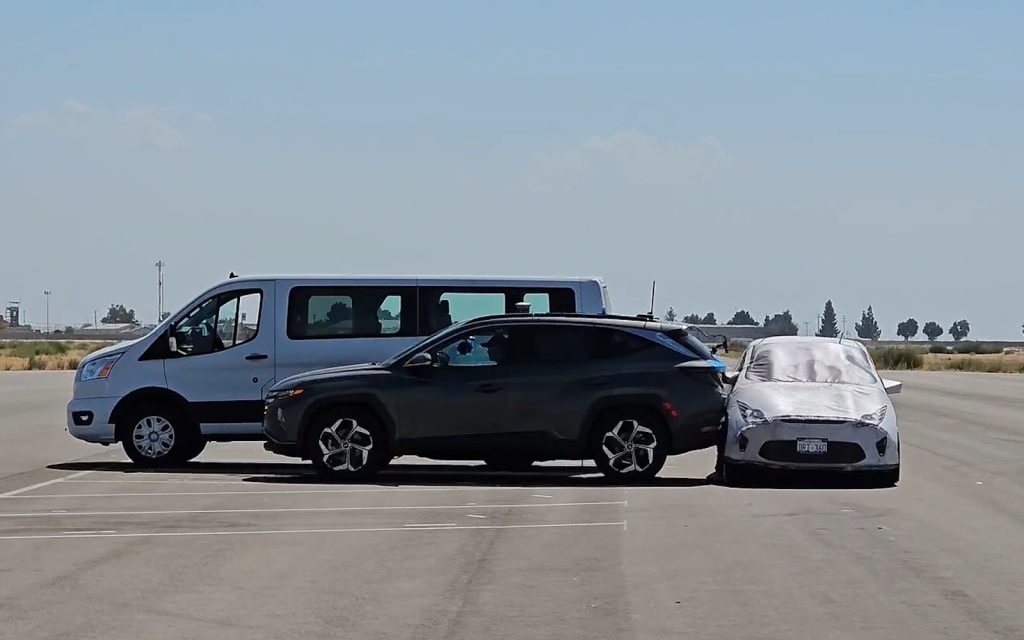Automatic Emergency Braking has proven to be a game-changing feature in many new automobiles and the Department of Transportation is preparing to ensure that all Americans get access to the technology with new rules that make it standard starting in 2029. Promises to leave lasting impact on automotive safety.
Automatic Emergency Braking technology has emerged as one of the most pivotal features in the automotive world over the past few years. AEB systems have played a role in not only reducing the number of crashes that occur on U.S. roadways but also cutting the number of fatalities and injuries that often come with a crash.
However, while the availability of the feature has grown over the past few years with 90% of new models offering it standard, AEB is still not universally standard like rear backup camera systems. That’s now changing, with the Biden Administration announcing a new rule that will make AEB systems standard in all new cars and trucks by 2029.
New requirement enhances safety for all

Toyota is one of 20 automotive manufacturers that voluntarily agreed to make AEB standard on new models including the 2024 Toyota Tacoma
The new rule is all about expanding safety with the regulation putting Automatic Emergency Braking systems standard on all new vehicles by the end of the decade. Prior to this announcement, some Automatic Emergency Braking systems were bundled into optional packages which put them out of reach for some buyers. The new rule will force automakers to stop this practice and make AEB systems universally standard by 2029. When that happens, AEB will join an elite club of features that were also made mandatory by government regulations including rear-view backup cameras and tire-pressure monitoring systems.
“The new vehicle safety standards that we finalized today will help save hundreds of lives and prevent tens of thousands of injuries” Transportation Secretary Pete Buttigieg said in a statement that accompanied the announcement.
The secretary’s statement holds weight when you consider that 41,000 motorists were killed in traffic accidents in 2023. Deaths have also been moving upward following the end of the COVID-19 pandemic.
AEB systems have already made a strong impact
Automatic Emergency Braking systems were first introduced in 2011 but they have managed to make a strong impact on safety with automakers and even some regulators agreeing that it has played a major role in reducing fatalities. These systems often use cameras, radar, or a combination of both to help identify vehicles, pedestrians, and other obstacles that are in front of the car. The system then alerts the driver to apply the brakes and if needed, can also apply the brakes itself.
The new rule also tightens what these systems must be capable of doing, with AEB systems being required to automatically apply the brakes at speeds up to 90 mph when a collision with the vehicle in front is imminent with the system also being capable of applying the brakes at speeds up to 45 mph to avoid collisions with pedestrians.
More Safety Stories
- IIHS Tightens Requirements for Top Safety Pick and Top Safety Pick + Awards
- Tesla Autopilot Has Critcal Safety Gap, Federal Investigation Links Feature To Hundreds Of Crashes
- Automakers Battling NHTSA to Halt Another Massive Airbag Recall
Consumers not receptive of changes, automakers sound off
The new rules may indeed improve vehicle safety, but the majority of new car buyers are hesitant to trust these technologies when they are out and about on their daily commute. According to a recent J.D. Power survey, consumers that they surveyed were reluctant about making the technology a mandatory requirement in new vehicles.
“Drivers have reported a lot of issues with it activating when it shouldn’t, said Kathleen Rizik, J.D. Power’s senior director for user experience benchmarking and technology. “They also find that it’s too sensitive or that it doesn’t react the same way they would.”
In addition to a high level of reluctance from consumers, some automakers also pushed back on the new rules saying that the stricter speed requirements for the system to operate are not technologically possible at the moment with regulators also concerned about “taking away the driver’s authority at higher speeds.” Thankfully, the new rules will not take too big of a bite out of consumer’s wallets with the the Department of Transportation saying the newly standard feature will only add $82 to the price of a new vehicle.








“amount of crashes”, “amount of fatalities” … NUMBER of crashes, NUMBER of fatalities